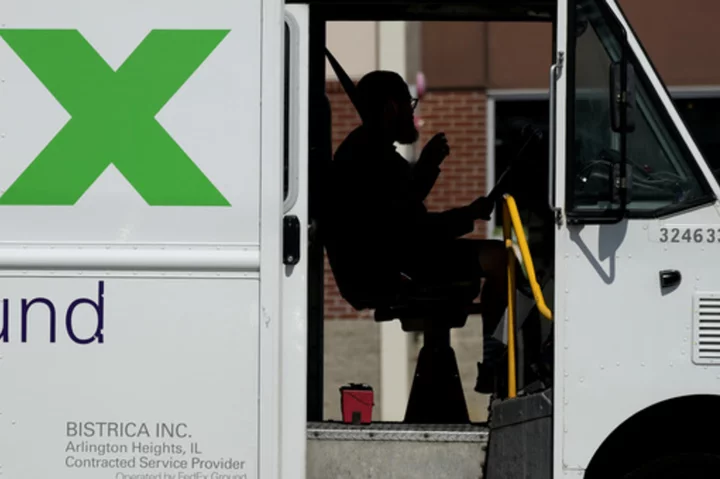WASHINGTON (AP) — Job growth in the United States has remained resilient for the past 2 1/2 years even after high inflation flared and the Federal Reserve jacked up interest rates at the fastest pace in four decades.
The September jobs report that the Labor Department will issue Friday will show just how much of that durability remains. Additional threats to the economy have emerged in recent weeks, including much higher long-term interest rates, rising energy prices, the resumption of student loan payments, widening labor strikes and the ongoing threat of a government shutdown.
Economists have forecast that employers added 163,000 jobs last month, a solid increase, though down sharply from the pace earlier this year, when the economy was adding an average of 310,000 jobs a month in the first quarter. The unemployment rate is expected to drop to 3.7%, near a 50-year low, from 3.8% in August.
A growing body of evidence, though, suggests that the job market is cooling — something Fed officials would like to see. A slower pace of hiring eases pressure on employers to offer higher pay to find and keep employees, which, in turn, can help cool inflation. Businesses often raise their prices to cover their higher labor costs.
Fewer Americans are quitting their jobs after a surge in resignations in the aftermath of the pandemic. Most people quit to take other jobs with higher pay, so the decline in quitting indicates that workers now see fewer available opportunities elsewhere.
And while the government reported a jump in open jobs in August, other measures, like those compiled by the job listings website Indeed, showed little change in that month and a steady decline in job vacancies for more than a year.
Yet the job market has been so strong for so long that a slowdown, as long as it remains gradual, would still keep it at healthy levels. The number of Americans seeking unemployment benefits, which tends to track the pace of layoffs, has remained persistently low. Many companies are reluctant to shed workers after having found it difficult to staff up again after the 2020 pandemic recession ended with a quick and robust recovery.
And surveys by the Institute for Supply Management, a trade group of purchasing managers, found that both manufacturing and services companies kept adding jobs last month. Among banks, restaurants, retailers and other service sector companies, hiring accelerated in September compared with August, according to the ISM.
Friday's jobs report comes at a time when the Fed is scrutinizing every piece of economic data to determine whether it needs to raise its key rate once more this year or instead just leave it elevated well into next year. After 11 hikes beginning in March 2022, the Fed's benchmark rate stands at a 22-year high of roughly 5.4%. The central bank's rate increases have led to much higher borrowing costs for consumer and businesses across the economy.
On the one hand, Fed officials, including Chair Jerome Powell, have stressed that inflation remains too far above their 2% target and that another rate hike might be needed to reduce it to that level. At the same time, several Fed policymakers have underscored that they want to be careful not to raise borrowing rates so much as to trigger a deep recession.
One of them, Mary Daly, president of the Federal Reserve Bank of San Francisco, said Thursday that a slower pace of hiring could help persuade the Fed not to hike again this year.
“If we continue to see a cooling labor market and inflation heading back to our target, we can hold interest rates steady and let the effects of policy continue to work,” Daly said in remarks to the Economic Club of New York.
After a period in the spring when traders seemed to expect the Fed to reverse course and cut interest rates soon, the financial markets have increasingly recognized that the central bank will keep its key rate elevated well into 2024. That's one reason why the yield on the 10-year Treasury note has surged since July, reaching a 16-year high this week before slipping to 4.7% Thursday.
The 10-year yield is a benchmark rate for other borrowing costs, including mortgages, auto loans and business borrowing. The average rate on a fixed 30-year mortgage jumped to nearly 7.5% this week, the highest level in 23 years. The higher yield has, in turn, punished stocks. The S&P 500 stock index has tumbled 7.2% since late July.
The surge in longer-term rates coincides with other threats to the economy, from higher gas prices and this week’s resumption of student loan payments to the autoworkers’ strike and the risk of a government shutdown next month, all of which could leave consumers with less money to spend to power the economy.
The economy's growth in the current October-December quarter could slow to an annual rate as low as a 0.7%, Goldman Sachs has estimated, sharply below a roughly 3.5% pace in the July-September quarter.









